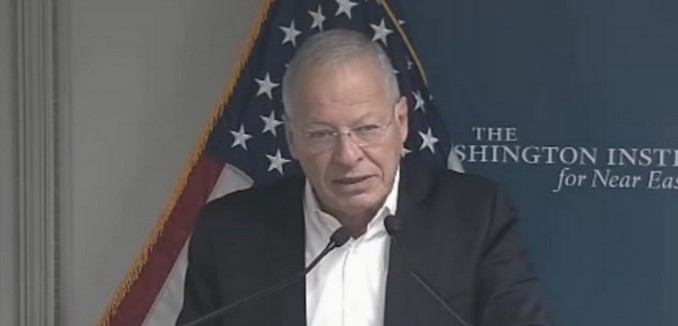The recent escalation along Israel’s border with Gaza, including an Israeli attack on the Hamas-ruled enclave over the weekend that destroyed two terror tunnels, is fueled in part by Hamas’s attempt to prepare for its planned “great march of the return,” a leading analyst of Palestinian politics explained to a press briefing hosted by The Israel Project on Monday.
Ehud Ya’ari, a commentator for Israel’s highly-rated Hadashot news program and a fellow at the Washington Institute for Middle East Policy, explained in the briefing that the increasing number of attempts by Hamas to plant improvised explosive devices (IEDs) near Israel’s border amounted to an effort of “shaping the arena of battle” for the planned marches on the border fence between Gaza and Israel. These marches, dubbed the “great march of return,” if launched would involve sending thousands of Gazans towards the border with Israel, challenging the IDF to respond against unarmed marchers. Hamas is planting the IEDs to test the speed and effectiveness of the IDF’s response to infiltration attempts of the no man’s land near the border fence.
Overall, according to Ya’ari, there are three factors driving the escalation. In addition to preparing the march, Ya’ari mentioned that Hamas’s latest actions are driven by what he termed as a “dangerous” split in the leadership of Hamas, and the failure of Yahye Sinwar, the head of Hamas in Gaza, to achieve reconciliation with the Palestinian Authority under Egyptian auspices. Regarding the split in the top echelons of Hamas, Ya’ari said that in his more than 30 years of covering the terror group he has never seen a split as “dangerous” or as “vicious” as the one currently underway. Though he acknowledged that the details of the split were taking place “behind closed doors” and didn’t elaborate on specifics, he added, that it is impossible to discuss the strategy of Hamas anymore “because there are two Hamas in action.”
Ya’ari explained that the IDF was preparing for the planned marches by improving their crowd dispersal tactics without using force.
One other observation that Ya’ari made was that the target of last week’s bombing of a PA convoy in Gaza was not Palestinian Prime Minister Rami Hamdallah, but rather security chief Majed Faraj. He said that the bomb that struck the convoy was buried deep in the ground and possessed an explosive charge that was not strong enough to kill anyone. It was meant as a warning, and as one of the Palestinian officials who appears to be in line to succeed PA President Mahmoud Abbas, Faraj appeared to be the intended recipient of the message.
Ya’ari distinguished between the situation in Gaza and the so-called “lone wolf” attacks in Jerusalem and the West Bank, including the two recent ones that claimed the lives of three Israelis. For the most part, the knife and car ramming attacks have been “contained,” he said.
A recording of the complete call is available here.
[Photo: WashingtonInstitute / YouTube]




